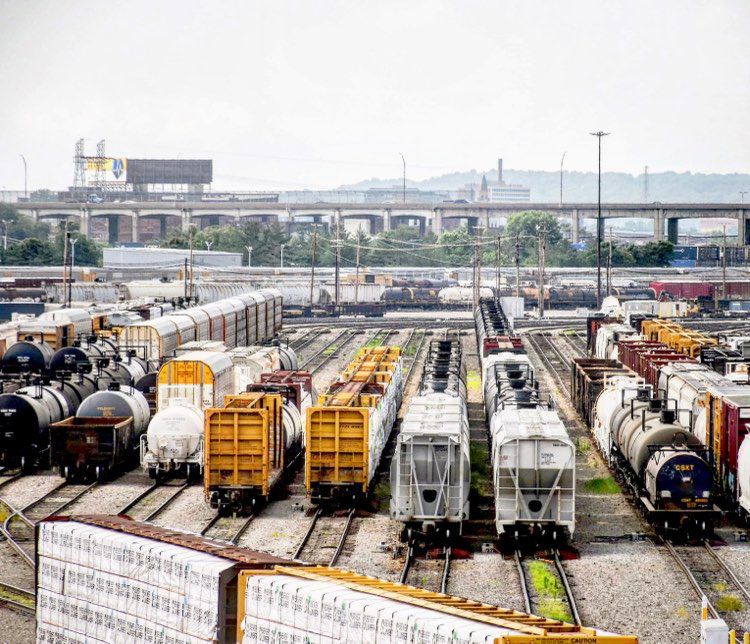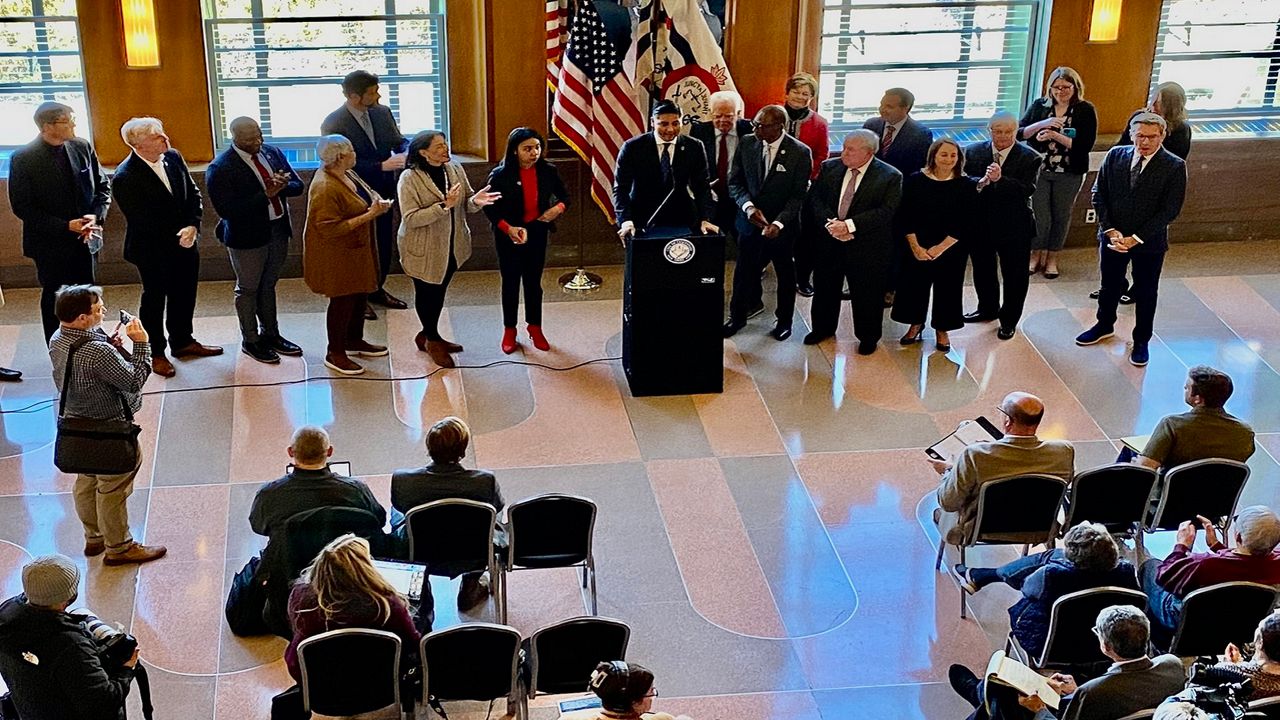CINCINNATI — City leaders and representatives from Norfolk Southern Corporation continue to voice their commitment to the $1.62 billion sale of the Cincinnati Southern Railway.
But following a well-publicized and fiery Norfolk Southern train derailment in East Palestine, Ohio, this past February, the question of when, and if, Cincinnati voters will agree to the sale remains uncertain.
What You Need To Know
- Six months after being announced, there's still no ballot date for the sale of the Cincinnati Southern Railway
- The city of Cincinnati and Norfolk Southern agreed in principle to the sale in November, but it required action, including a ballot initiative to pass
- The CSR Board of Trustees can elect to put the initiative on one of three different election dates, including this November
- Discussions about the sale are occurring in the wake of the East Palestine train derailment
Under the terms purchase agreement, Norfolk Southern Railway Company would purchase the 337-mile railroad from the city of Cincinnati. Norfolk Southern would also get all the physical railway assets and the 9,500 acres of land that the infrastructure sits under between southwest Ohio and Chattanooga, Tenn.
To make the deal possible, the Ohio General Assembly approved a necessary change to state law in March as part of the state’s transportation budget. The deal is also contingent upon regulatory clearance from the U.S. Surface Transportation Board. That’s not yet taken place.
Initially, both parties pushed for a vote as early as Nov. 2023. But as of Tuesday, the board hadn’t decided when it would appear on a Cincinnati ballot.
In the months since the planned deal’s announcement, critics have vocalized their belief the $1.6 valuation is too low. Others have questioned the sale considering the derailment in northern Ohio.
The city has long leased use of the railroad to Cincinnati, New Orleans and Texas Pacific Railway, a wholly owned subsidiary of Norfolk Southern. The current 25-year lease expires in 2026.

Bob Taft, Ohio’s former governor, believes it’s a legitimate question to ask whether the city should continue to be in the railroad business, especially considering the East Palestine situation. Cincinnati Southern Railway is the only municipally owned railroad in the country.
The Republican described the situation as creating financial pros and cons. A negative Taft mentioned is losing that guaranteed rent payment every year. But on the positive side, the city would remove possible financial risks related to owning the railroad and would also secure a large lump sum payment.
“This could be a positive in the eyes of voters,” said Taft, who currently teaches at the University of Dayton.
The CSR Board last met on April 18. Among other topics, the board — made up of five members appointed by the mayor and approved by City Council — noted their intention to take up the issue on May 16.
At the upcoming meeting, the board may consider whether to adopt a resolution proposing Nov. 7, 2023, as the date to present a ballot issue to the voters of Cincinnati, Paul Muething, president of CSR Board of Trustees, wrote in a statement. Muething is one of three Democrats on the board. It also has two Republicans.
According to the state’s budget language, the ballot initiative must appear on the ballot for the general election this November, the primary election in March 2024 or the presidential election on Nov. 5, 2024. If it were to fail, the General Assembly would have to reauthorize it before it could go back to the ballot.
From a timing standpoint, Taft thinks it would make sense to go to the polls either this November or for next year’s midterm elections. He wouldn’t wait until Nov. 2024 if he were running the campaign, he said, because he’d fear it’d get lost among all the other races and issues.
“To be heard, you have to be seen,” said Taft, who currently teaches at the University of Dayton. “This is not an issue the average voter will be that familiar with, so they’re going to need to inform the voter about the advantages of the issue to chance to pass.”
Aditya Roy-Chaudhury, a local Democratic strategist, said the decision about when to run a ballot initiative could also come down to demographics.
For example, there’s often a younger, more Democratic electorate for presidential cycles. But in off-year cycles, like the one coming up in November, the expected age of voters is significantly older, he said.
Roy-Chaudhury has spent the past 10 years working as a consultant on political campaigns. He was part of the team that worked on the successful pro-transit levy campaign in 2020 and the anti-Issue 3 campaign in 2021.
He stressed the importance of being aggressive with a campaign from the jump. As soon as it’s decided they’re going to be on the ballot, they’ll need to put a poll to figure out what messaging best resonates with Cincinnati voters.
Once they know which messages work best for each demographic, the team can build a marketing campaign that specifically speaks to each target audience, Roy-Chaudhury said. He believes this can be done through multiple different mediums, but most often, we will see direct mail along with digital, radio and TV advertising.
Proponents of the deal say it's a good deal for both the city and the railway.
For Norfolk Southern, it eliminates uncertainty about future lease costs and gives them total control over the asset.
In November, Alan H. Shaw, Norfolk Southern’s president and CEO, referred to the railway as a critical artery linking the Midwest and the Southeast. The line is one of the highest-density segments of the company’s network, with up to 30 trains a day traveling the route.
“It plays an important role in our powerful network that serves more than half the U.S. population,” he added.
For the city, it would mitigate risks associated with the long-term maintenance of the railroad, Pureval said. While Norfolk Southern handles most of the line’s maintenance needs, a major overhaul of the road was done in 1961 to modernize the track and tunnels.
But the primary objective is to create the Building Our Future Trust Fund, Pureval said. If the sale takes place, investment returns from the trust would go to the city every year. Those dollars could only go toward projects that modernize or replace things such as streets, bridges, municipal buildings and parks.
The city currently generates $25 million per year from its current lease agreement, Pureval said. But he believes selling the railroad would boost that figure to the $50 to $60 million range.
One of the most successful ways to build support for a campaign, Roy-Chaudhury, said is to get vocal advocates for the initiatives. He said these could be elected officials, a political party, or everyday residents such as community activists and faith leaders.
“Some voters may not know much about the issue, but they have inherent trust with these groups and individuals that they have known and seen to be effective over the years,” he added. “A voice of support from them has historically proven to go a long way when building public support.”
Both Pureval and leadership from Norfolk Southern reiterated their support for the deal in a message to Spectrum News. Both parties declined additional comment, however.
To get the railways measures on a ballot, the CSR Board needs to pass a resolution setting the date of the election and then send it to City Council for certification. That must take place no less than 90 days before the election.
That process must happen no later than Aug. 9 to make the November ballot.



